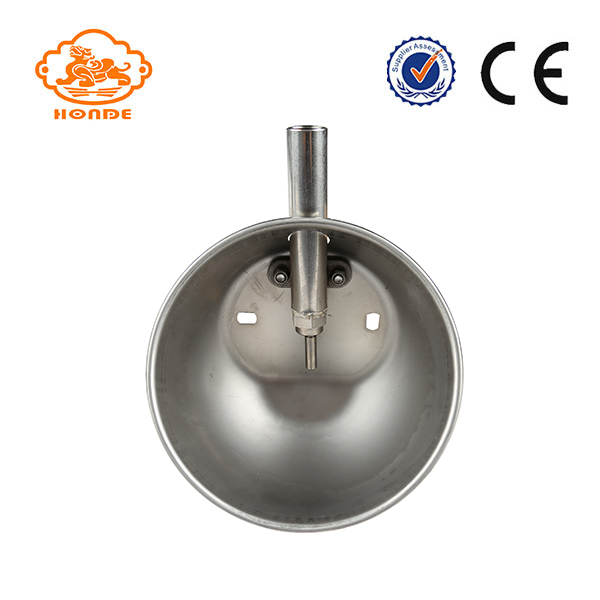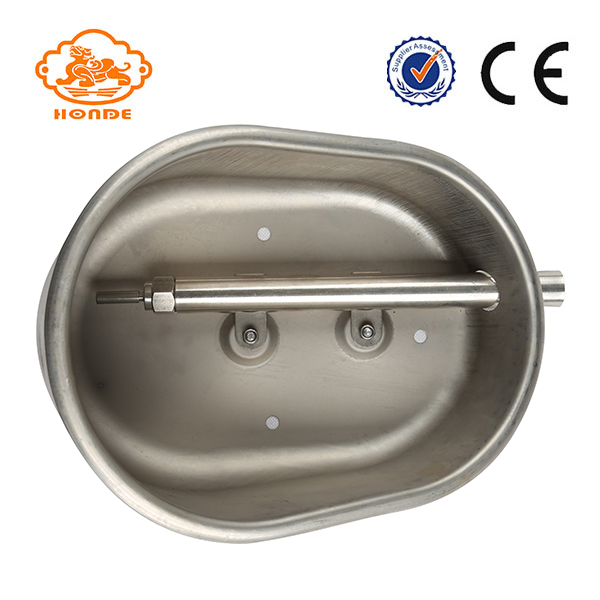Piglets are chopped and chopped
Core Tip: Give piglets at least 3 days before castration to fully ingest colostrum and establish a stable teat order. This can also allow the testicles to have sufficient time to descend to the scrotum, and piglets with scrotal hernias can also be discovered in time and handled in time. Castration within 14 days of age has several advantages.
One, background
In North American pig production, castration is almost always required except for a few boars reserved for breeding. There are two main reasons why fat pigs are castrated. The first is behavioral reasons. After reaching sexual maturity, boars in the same column will show more aggressiveness than the same age. Weight boars are more difficult to manage. The second reason, and probably the main reason, is that the meat of boars that are close to mature weight (approximately 90 kg in weight) may have an odor. Eating boiled boar pork will have a special offensive taste after cooking.
Boar taint is mainly caused by two compounds secreted by boars in vivo: androstenone and skatole. The pheromones are synthesized in the testis, pooled and converted to pheromones in the salivary glands, and the sexual activity of the sow can be stimulated during the mating process. The pheromones also deposit in fat and can be released when cooking heat, causing boar taint. Skatole is produced by microbes in the hindgut of boars. It can be absorbed into the bloodstream through the intestinal wall and is metabolized and degraded in the liver, but it may also enter the adipose tissue and produce boar taint (Squires, 1999).
Castration: Another controversial focus on boar welfare?
Several countries in Europe have begun to pay attention to boar mowing (Arnot and Gauldin, 2007). For example, both Norway and Switzerland passed legislation that would forbid boars from 2009. Several large supermarkets in the Netherlands have stated that they refuse to distribute the male pork unless the boar is anaesthetized before castration. McDonald's, a fast food chain in the Netherlands, also announced that it will no longer sell products containing male and female pork. Burger King, another fast-food chain in the Netherlands, also made a similar statement.
In the United States, the focus of animal welfare in the pig industry is now on the sow individual limit line. In fact, Florida, Arizona, and Oregon have recently passed legislation to disable the gestation limit column, requiring swarm breeding of sows, and several pig industry integrators have announced changes to the production system in more production. Crowd-feeding is used in the cycle. Castration as an animal welfare issue has not attracted the attention of the American public. However, the new legislation on castration in Europe has caused concern for US pig producers. In the future, this measure to control boar attacks and improve pork quality will not be banned here in the United States.
Someone proposed an alternative to castration. However, these alternatives are easier said than done. For example, in the United Kingdom and Ireland, castration is not a routine measure, but slaughter weight and age are relatively low there. The typical slaughter weight in the United Kingdom is 104kg, or even lower, while the average slaughter weight in the United States is 122kg. Most of the slaughtering and processing plants in the United States are designed for slaughter heavy pigs. If the average slaughter weight is reduced by 23 kg, serious logistic and economic problems will result. Pork consumers in Europe have expressed their willingness to accept a certain degree of boar taint, but U.S. pork producers may be reluctant to take the risk of trying their own customers to accept such pork. Other alternatives include performing anesthesia during castration or replacing castration with chemical or immune castration. These alternatives also mean that it is easier to do it. If it is actually used in practice, it will encounter technical and economic obstacles.
Third, the most important factor: proper cutting procedures
At present, the AVMA's policy on boar mutilation seems to find a balance between animal welfare and pork production quality. The organization acknowledges that castration can control the aggressive behavior of pigs and recommends that it continue to be implemented but should be implemented at least 5 days before weaning, so that piglets can have sufficient recovery time before they are released from the sow. The organization's policy also requires that, assuming that the castration is delayed after 28 days of age, anesthesia or painless castration should be performed, and when this larger, older pig is castrated, it should be operated by a professional veterinarian.
AVMA's limitations on piglet castration are based on scientific evidence. For example, scientific studies have shown that piglets at the age of 2 weeks are far less painful than 7-week-old piglets (McGlone and Hellman, 1988). Another study showed that 1-day-old castrated piglets grew slower before weaning than 14-day-old piglets (McGlone et al., 1993). The results of this study differ from those that suggest early implementation of castration during lactation. In a similar study, Douet et al. (1994) found no difference in the growth rate between 14-day-old castrated piglets and 10-day-old castrated piglets.
Combined with the experience of pig farm technology and management personnel, these limited research results show that castration is best implemented during the middle period of lactation, or between 4 and 14 days of age. The piglet should be allowed to fully ingest colostrum for at least 3 days before castration and establish a stable teat order. This can also allow the testicles to have sufficient time to descend to the scrotum, and piglets with scrotal hernias can also be discovered in time and handled in time. Castration within 14 days of age has several advantages. At this stage piglet individual is small, easy Baoding. The testis is easily separated from the spermatic cord and has a small amount of bleeding. In fact, for a piglet from 4 to 14 days of age, one person can perform castration without the assistance of another person. Another benefit of castration at this stage is that the piglet can continuously obtain antibodies from breast milk before weaning to prevent infection and promote recovery.
When it comes to pig's castration, the most important aspect may be operator training. Veterinarians, animal husbandry teachers, and qualified farm managers can and should provide training for workers responsible for cutting operations. Current information on the cutting process can be found in the new edition of the pig industry manual PIH 01-01-07, Piglet management - from birth to weaning (Reese et al., 2007). There are several methods of cutting that are described here, but there is one that is most used in commercial pig farms and can be performed by a single person using a scalpel. Here's a summary of this castration method in the pig industry handbook.
Fourth, single use of a scalpel to implement the method of castration
1. Hold the two hind legs of the piglet with the piglet facing downwards.
2. Use your thumb to push the piglet's testicles upwards.
3. Cut the skin on both sides of the testicles. The direction of the incision is the same as the direction of the tail.
4, the incision must be taken in the lower part of the scrotum, which is conducive to the discharge of liquid
5, whether it does not matter cut white film.
6. Extrude the two testes separately from the incision and gently pull the testicles.
7. Pull out the testicles and press the pelvis of the piglet with your thumb.
8. It is important that the thumb presses the pelvis so that the spermatic cord can be separated at the thumb press.
Otherwise, the spermatic cords may be separated in the deep pelvic cavity, which is likely to cause hernia.
9, cut the spermatic cord with scraping action, cut the testicles.
10. Excise the spermatic cord and tissue protruding beyond the incision and spray the disinfectant to the wound.
The Pig Drinking Bowl is a automatic drinking equipment ,used automatic welding process. Unique design that keeps dung out of the pig drinking bowl No blind corners , so the bowl is kept clean all the time The water nipple is placed slightly to one side at the bottom of the bowl and releases only the amount of water that is actually drunk Considerable water savings-considerable reduction in the quantity of slury - diameter of the rolled edge together with the 1.0mm thick stainless steel plate guarantee a very sturdy drinking bowl .
The turned-down edge prevents collection of dirt , which constitutes a bacterial risk . it also eliminates the risk of ear tags getting caught and possibly ripped off , causing ear damage.


Pig Drinking Bowl
Pig Drinking Bowls,Pig Piglet Feeders,Animal Drink Bowl Pig Drinker,Big Size Pig Drinking Bowl,Auto Pig Drinking Water Bowl
HuangHua FengYi Honde Metal Factory , https://www.farrowingcratesfromchina.com